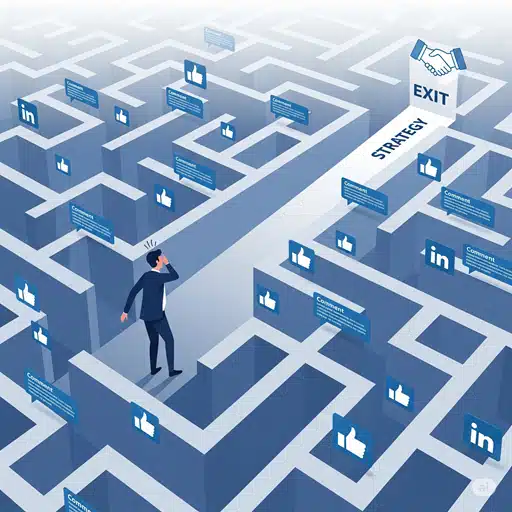Table of Contents
Recently, Google, in a not-so-humble move, published a 1,001-point memo on how generative AI will change business as we know it. No big deal—just a casual note about how everything you thought you knew is about to be fundamentally reinvented. (You can see the sprawling list for yourself right here).
For most entrepreneurs, this list was like being handed the blueprints to a starship—impressive, sure, but you’re still trying to figure out the latest update on the office coffee machine. The sheer scale of it is both inspiring and paralyzing.
This created a “paradox of choice.” When faced with 1,001 different doors, the human brain defaults to the most familiar, well-lit, and safest-looking hallway. For AI, that hallway is “image and text generation.” The result? Smart, ambitious, and talented entrepreneurs are using one of the most revolutionary technologies in human history to… create pictures of their cat as a Van Gogh painting or find creative alternatives to “Happy Friday!” emails. It’s an epic case of using a sledgehammer to crack a nut.
This isn’t a criticism. It’s an observation. And it’s time to change the status quo.
Moving Past the “Big Five”: The Tutorial is Over. The Real Game Begins.
If you’ve been dabbling in AI for a while, you’ve likely passed the beginner level. You may have even mastered what the industry informally calls the “Big Five” of basic AI use (we’re calling it that):
- The Pet Portrait Artist: Creating that magnificent portrait of your dog as a samurai floating in space.
- The Social Media Whisperer: Finding a witty caption for your coffee-with-a-view picture that goes beyond the cliché.
- The Email Diplomat: Making sure that “constructive feedback” email to your boss sounds just a little too intelligent and diplomatic.
- The Blog Post Impersonator: Rewriting “The 5 Golden Rules of Digital Marketing,” a blog post that already has 10,000 copies on the internet.
- The TL;DR Wizard: Asking AI for a three-paragraph summary of a 30-page report you have no intention of reading.
If you can do these things, congratulations. Genuinely. You have successfully completed the tutorial level of AI usage.
Now, welcome to the main game.
Installing AI Not as a Tool, but as an “Operating System”
The problem is that you see AI as a “tool” to finish tasks on your to-do list faster. That’s like thinking a hammer is only for hitting nails. You can also build a house with it.
Strategic entrepreneurs don’t use AI for individual tasks. They transform it into an operating system that their entire business runs on. This OS has four main engines that talk to each other, learn from each other, and grow your business even while you sleep.
1. The Intelligence Engine: Your Company’s Strategic Brain
The business world is a foggy battlefield. Every step you take without knowing where you’re going, where your enemy is, and where the treasure is buried could be your last. The Intelligence Engine is the system that clears the fog and hands you thermal-vision goggles.
Its Mission: To turn assumptions into data, and gut feelings into actionable intelligence.
Imagine a startup founder, “Chloe,” who was selling a project management tool for general freelancers. Sales were flat. Instead of guessing, she deployed her Intelligence Engine. She fed it hundreds of forum discussions and reviews about her competitors. The AI didn’t just find feature complaints; it found an emotional pattern. A specific subgroup—freelance writers—consistently complained about how existing tools were too “visual” and not “narrative-focused.” This was the golden gap. Chloe pivoted, rebranded her tool for writers, and her revenue tripled in six months. She didn’t just find data; she found a hidden market.
Advanced Tactics for Your Intelligence Engine:
- Deep Competitor Decryption: “Act as a military-grade competitive intelligence analyst. My company, Blyxxa, sells digital guides to entrepreneurs. Analyze my top 3 competitors. Go beyond their pricing. Analyze the emotional triggers in their ad copy, identify the core psychological pain points their marketing targets, and pinpoint a ‘golden gap’—a high-demand, low-competition niche they are all ignoring.”
- Simulated Focus Groups: “Act as a focus group of five distinct customer personas for an online course about public speaking. The personas are: a nervous student, a mid-level manager, a startup founder, a salesperson, and a wedding officiant. Have them discuss their primary fears and desired outcomes regarding public speaking. Generate a transcript of their conversation.”
- Creating “Negative Personas”: “Analyze my current customer data. Based on support ticket frequency, refund requests, and negative feedback, create a ‘negative persona’ of the customer type we should avoid targeting. Describe their mindset, unrealistic expectations, and the marketing messages that might accidentally attract them.”
- Future Trend Prediction: “Analyze the following 50 articles about the future of remote work. Synthesize the key technological, cultural, and economic shifts predicted for the next 3-5 years. Based on these trends, suggest three untapped opportunities for a business that provides digital tools for remote teams.”
⚠️ Common Mistake vs. Pro-Strategy Mistake: Asking “What are my competitors’ prices?” This gives you data. Strategy: Asking “What is my competitor’s value proposition, and what is the one thing their customers wish they offered but don’t?” This gives you a strategy.
🚀 Ignite the Engine: To build an Intelligence Engine this powerful, you must learn its language. That language is strategic prompt engineering. Blyxxa’s AI Prompt Mastery: Unlock Genius Responses teaches you the grammar of this language. To use this intelligence to dominate search engines, our AI for SEO Mastery guide gives you the battle plan.
2. The Efficiency Engine: Your Digital Nervous System
As an entrepreneur, your most valuable resource isn’t money; it’s focused time. And most of that time is stolen by tasks that a CEO shouldn’t be doing. Emails, data entry, scheduling, follow-ups… This operational drag is the silent killer of growth. The Efficiency Engine is the digital nervous system that eliminates it.
Its Mission: To automate every repetitive process, freeing up human intelligence for the two things it does best: creativity and strategy.
Think of “Alex,” a freelance web designer who was spending nearly 40% of his week on non-billable tasks: chasing invoices, scheduling meetings, and answering the same client questions. He felt more like an admin than a creative. He decided to build an Efficiency Engine. He set up an automation that sent polite, escalating invoice reminders. He created an AI-powered scheduler that handled all his meeting bookings. He compiled his 20 most-asked questions into a document and used an AI to draft instant, accurate replies. Within a month, Alex reclaimed 15 hours a week. He used that time to land two new high-value clients. The engine didn’t just save him time; it directly increased his income.
Advanced Tactics for Your Efficiency Engine:
- The AI Meeting Secretary: Use AI tools that can transcribe your Zoom calls and then have your own AI analyze the transcript. “Read this meeting transcript. Identify all action items, assign them to the correct person mentioned, and generate a concise summary email to be sent to all attendees with a due date for each action item.”
- The Smart Content Scheduler: “Here is my approved content for the next month. Create a detailed social media publishing calendar in a table format. Include the platform (LinkedIn, X, Instagram), the exact date and optimal time to post, the full caption, and relevant hashtags for each piece.”
- The Proactive CRM: Set up a workflow where every email in your inbox is scanned. If it detects a new contact or a significant interaction, it automatically creates or updates a contact card in your CRM (like Notion or Hubspot) with notes from the email.
- The Financial Watchdog: “Analyze my monthly expense report from this CSV file. Categorize all expenses, identify the top 3 spending categories, and flag any subscriptions or recurring charges that have increased by more than 10% from the previous month.”
⚠️ Common Mistake vs. Pro-Strategy Mistake: Trying to automate everything at once, including complex creative tasks, which leads to chaos. Strategy: Starting with the most boring, repetitive, and low-risk task you do. Automate that one thing perfectly. Then, move to the next. Build your engine one brick at a time.
🚀 Ignite the Engine: Designing this digital nervous system isn’t as complex as it sounds—if you have the right blueprint. Blyxxa’s AI-Powered Business Automation Playbook gives you that blueprint, step-by-step.
3. The Empathy Engine: Your Business’s Heart
People buy with logic, but they stay loyal with emotion. Your competitors can copy your product and undercut your price, but they can never replicate the bond you build with your customers. The Empathy Engine is the system that builds and strengthens that bond, at scale.
Its Mission: To understand your customers as human beings, not data points, and to make them feel seen, heard, and valued.
Consider an e-commerce store selling skincare. They were struggling with customer retention. They built an Empathy Engine. They fed five years of customer support emails into an AI and asked it to identify the “emotional journey” of their customers. The AI found that customers were most anxious between purchase and delivery, and most confused about how to layer the products. Armed with this, the company created a series of proactive, personalized emails and SMS messages that were sent during the shipping phase, along with a personalized “application ritual” guide sent upon delivery. Their repeat purchase rate increased by 22%. They didn’t sell harder; they cared smarter.
Advanced Tactics for Your Empathy Engine:
- Proactive Check-ins: “Generate a list of customers who have not purchased in the last 90 days but previously had a high purchase frequency. Draft a friendly, non-salesy ‘just checking in’ email for them that references their favorite past purchase and asks if there’s anything new they’re looking for.”
- Personalized Onboarding: “A new customer just signed up for my course. Based on the survey they filled out (their goal is ‘to overcome stage fright’), create a personalized welcome email that acknowledges their specific goal and recommends they start with Module 3, which deals directly with performance anxiety.”
- Turning Complaints into Opportunities: “This customer is angry because their shipment was delayed. Draft a response that uses the ‘Acknowledge, Align, Assure’ framework. Acknowledge their frustration without making excuses, align with their feeling of disappointment, and assure them of the specific action being taken to resolve it. Also, generate a unique 15% discount code for their next purchase as a gesture of goodwill.”
- Community Trend Spotting: Analyze conversations in your Facebook group or Discord server. “What are the emerging topics or questions that members are discussing among themselves that are not on my official content roadmap? Identify three of these ‘organic’ interests.”
⚠️ Common Mistake vs. Pro-Strategy Mistake: Using personalization to be creepy, like referencing the weather in someone’s city. It feels invasive. Strategy: Using personalization to be helpful, like referencing a customer’s stated goals or past preferences to guide them better. It’s about service, not surveillance.
🚀 Ignite the Engine: The foundation of a strong Empathy Engine is consistent and professional communication. Blyxxa’s Copy & Paste Response Vault provides the base for that communication with over 400 scenarios. It’s the perfect foundation for your AI to learn from and build upon.
4. The Growth Engine: Your Company’s Megaphone
You can have a great product and perfect systems, but if nobody knows about it, you’re just a tree falling in an empty forest. The Growth Engine is your non-stop marketing and sales force, broadcasting your voice, your message, and your value to the world.
Its Mission: To end marketing by guesswork and build a data-driven, scalable, and constantly optimizing content and sales machine.
A content creator, “Maria,” was stuck at 10,000 followers for a year. She was creating content based on inspiration and what “felt right.” It was exhausting and ineffective. She then built a Growth Engine. She used her Intelligence Engine to identify three underserved content pillars. She then used her Growth Engine to create a system. For every one “hero” YouTube video, the AI was tasked to generate five short-form clips for TikTok/Reels, a detailed X thread, a LinkedIn article, and a newsletter summary. She went from posting randomly to executing a strategic, multi-platform content matrix. Her audience grew to 100,000 in the next eight months.
Advanced Tactics for Your Growth Engine:
- Create Your Brand Voice Guide: “Analyze all of my past blog posts. Distill my brand voice and tone into a guide. Define its core attributes (e.g., witty, authoritative, empathetic), provide ‘do and don’t’ examples, list common words and phrases I use, and describe the overall writing rhythm.”
- Generate Sales Objections and Rebuttals: “Act as a skeptical prospect for my coaching program. Generate the top 10 most likely objections they would have (e.g., ‘it’s too expensive,’ ‘I don’t have time,’ ‘how is this different from X?’). Then, for each objection, act as an expert salesperson and write a clear, empathetic, and persuasive rebuttal.”
- Strategic Content Repurposing: “Here is a transcript of my latest podcast episode. Transform this into a comprehensive, 2,500-word ‘ultimate guide’ blog post. Structure it with clear H2 and H3 headings, pull out three memorable quotes to be used as social media graphics, and write a 5-part email series that teases the content of the post.”
- A/B Test Ad Copy at Scale: “Here is the core benefit of my product: ‘Saves freelancers 10 hours a week.’ Write 10 different Facebook ad headlines for this. Two should use a question, two should use a shocking statistic, two should focus on the pain point of being overworked, two should focus on the benefit of more free time, and two should include a strong sense of urgency.”
⚠️ Common Mistake vs. Pro-Strategy Mistake: Copying and pasting AI-generated content directly, which often sounds generic and can contain factual errors. Strategy: Using AI to generate the first 80% draft, then applying your human expertise for the final 20%—fact-checking, adding personal stories, and refining the tone. You are the editor-in-chief, not a stenographer.
🚀 Ignite the Engine: To run this engine at full throttle, you need the right fuel. The Viral AI Creator’s Kit gives you the blueprint for a viral content factory, while the 100 Viral Social Media Prompts provides the arsenal of ideas to run that factory indefinitely.
So, Where Do You Take the First Plunge in This Ocean?
I can feel your brain overheating. “This is all great but… WHERE DO I START?”
The answer isn’t a to-do list. The answer is to ask yourself the right question.
Grab a pen and paper or open a new note. And run through this quick self-diagnosis. Answer with a simple “Yes” or “No.”
“Right now, what is the single biggest BOTTLENECK to my business’s growth?”
Diagnostic A: The Intelligence Bottleneck
- Do you have a written, one-page document describing your ideal customer in detail? (Y/N)
- Can you name your top competitor’s biggest marketing weakness off the top of your head? (Y/N)
- Is your process for developing new product ideas based more on data than on gut feeling? (Y/N)
- Result: If you answered “No” to 2 or more, you start with The Intelligence Engine.
Diagnostic B: The Efficiency Bottleneck
- Do you end most workdays feeling busy but not accomplished? (Y/N)
- Do you spend more than 2 hours a day on administrative tasks like email, scheduling, or data entry? (Y/N)
- If you took a two-week vacation, would your business operations completely halt? (Y/N)
- Result: If you answered “Yes” to 2 or more, you start with The Efficiency Engine.
Diagnostic C: The Empathy Bottleneck
- Do you know the top 3 reasons why your customers choose you over competitors? (Y/N)
- Is your communication with existing customers proactive rather than reactive? (Y/N)
- Do you have a system for consistently collecting and analyzing customer feedback? (Y/N)
- Result: If you answered “No” to 2 or more, you start with The Empathy Engine.
Diagnostic D: The Growth Bottleneck
- Do you have a content calendar planned out for at least the next month? (Y/N)
- Do you feel confident that your marketing messages clearly articulate the value you provide? (Y/N)
- Do you have a systematic way of attracting new leads, or do you rely on luck and referrals? (Y/N)
- Result: If you answered “No” to 2 or more, you start with The Growth Engine.
Don’t try to do everything at once. Pick one engine. Install it, run it, and see the results. It will start to fuel the others.
The Blueprint and The Architect
Google’s 1,001-point list wasn’t a to-do list. It was the inventory sheet for a massive warehouse of construction materials.
AI gives you the bricks, the steel, the cement, and the glass. It can even advise you on how to build the strongest foundation or design the tallest skyscraper.
But never forget: You are the architect.
You are the one who sets the vision, who decides which building gets built, and who adds the final, human touch. Will you use this technology to erect a meaningless skyscraper, or to build a city that improves the lives of thousands?
The choice is yours. We at Blyxxa are just here to provide the best architectural blueprints and engineering guides.
Now, go build.






